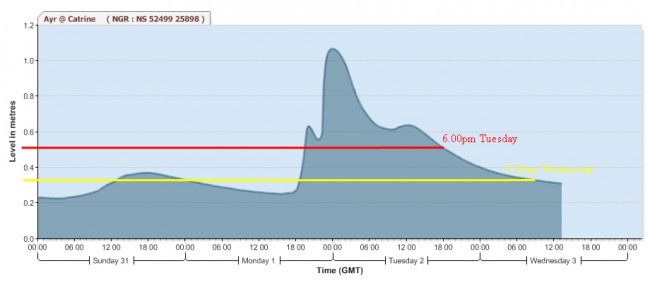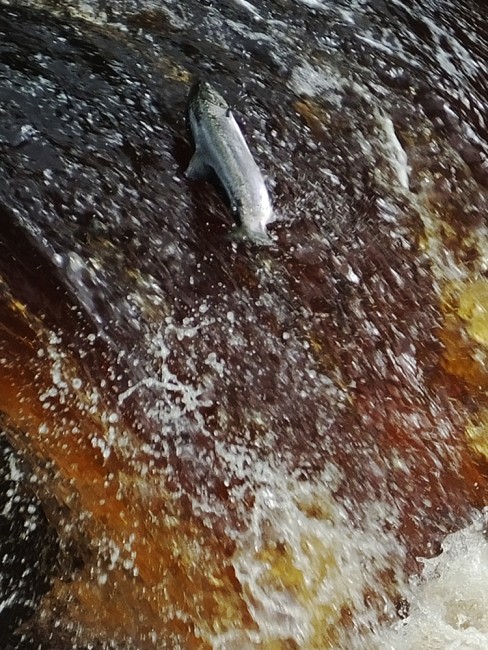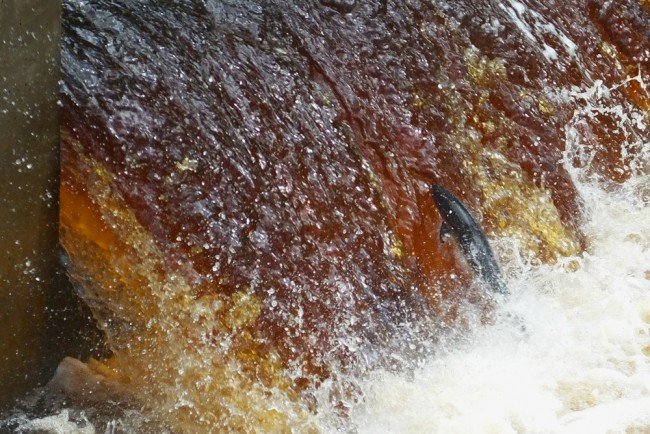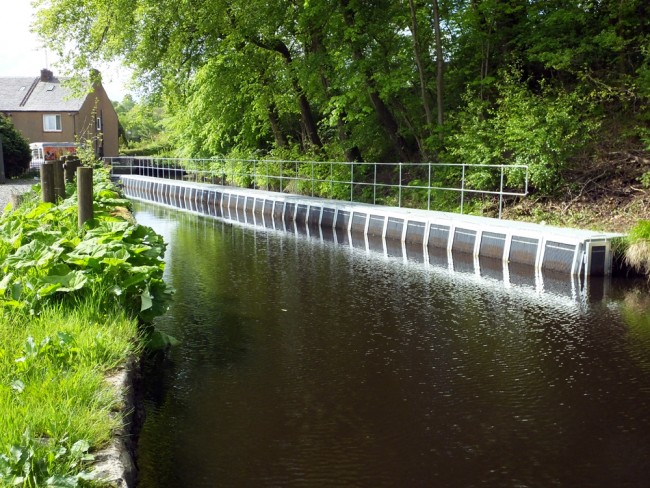We headed to Catrine Dam this morning to have a look at the levels following our visit last night. At 6.00pm yesterday, the entrance to the fish pass was obliterated by the flow over the dam back thundering into the entrance to the fish pass. Water levels last night at 6.00pm were around 0.5m on the hydrography below. This morning levels had dropped back to approximately 3.2m at the time of our visit. The entrance to the fish pass is accessible at this level and the salmon running the river were able to find a way through the ladder and carry on upstream. There were a few salmon showing at Anderson’s while we were there and they ranged in size from grilse to fairly large Multi Sea Wintered (MSW) fish.

The coloured lines on SEPA’s hydrograph illustrate the river levels at the times we attended. At some point overnight, water levels dropped back allowing the fish to continue through the ladder and upstream.

Other still make a leap of it and reveal themselves in a flash of silver. This was a nice sized salmon straight from the sea.
The coloured lines on SEPA’s hydrograph illustrate the river levels at the times we attended. At some point overnight, water levels dropped back allowing the fish to continue through the ladder and upstream. The fish pass should be useable across no less than 80% of the flows, not just the lower end of the scale (the lower 10% being inaccessible is acceptable as migration is unlikely in such low water).
Salmon make it over Anderson’s easily with many now not showing but swimming up the weir unseen. Others still make a leap of it and reveal themselves in a flash of silver. This was a nice sized salmon straight from the sea.
Whilst at Catrine, we looked at the newly installed smolt screens in the lade. This was only finished in the last week or so.

Muir inspecting a gap between the wall and the smolt screens. Smolts will end up in the votes unless these gaps are sealed, but otherwise the screens should do their job
The Community Trust have built a robust and well designed gantry across the lade to funnel smolts into the by-wash (yet to be completed) and back to the river. Apart from a couple of badly fitting screens, and gaps at each end that will allow smolts to enter the votes (they may already have plans to seal these off), the only other comment I would make is that the screens themselves are raw steel and are already rusting. It won’t take long for a crust of oxide to build up on these screens and reduce flow and I expect this decision to install bare metal rather than galvanised screens in water will be one that is regretted in the not too distant future. Of course this is a cost saving measure but so too has been the refurbishment of the ladder and we are still awaiting a satisfactory outcome to many issues, not least access for fish.



